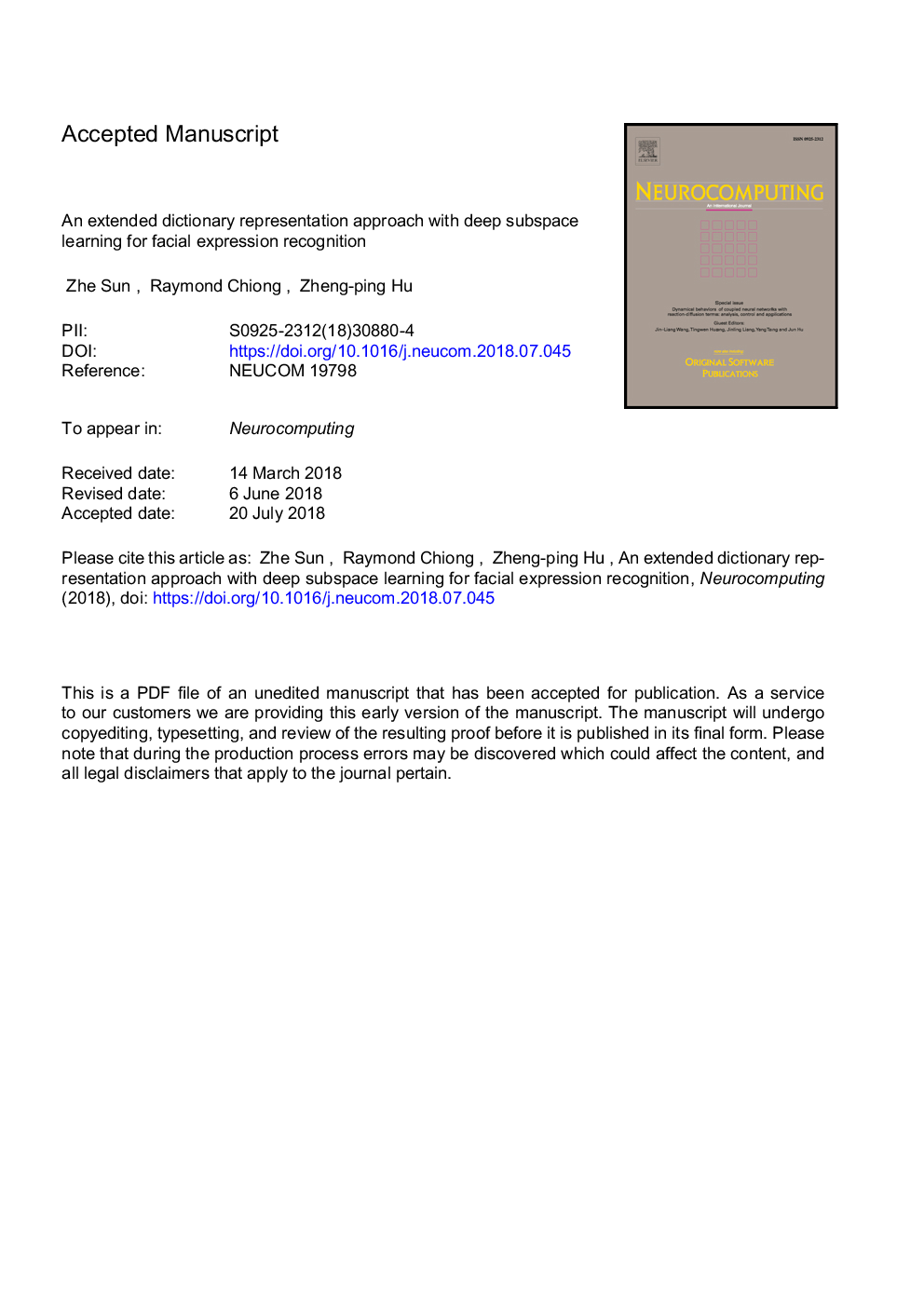| Article ID | Journal | Published Year | Pages | File Type |
|---|---|---|---|---|
| 8965156 | Neurocomputing | 2018 | 17 Pages |
Abstract
Deep subspace learning (DSL) models based on the principal component analysis network (PCANet) and linear discriminant analysis network (LDANet) have shown to be promising alternatives to deep learning models when there are computing power and training data constraints. However, high dimensionality of the feature space remains a major issue for DSL models. This paper presents a novel DSL approach based on an extended dictionary representation with deep subspace features for facial expression recognition. First, we propose the use of feature pooling with DSL by adding rank-based average pooling between each subspace mapping layer. We then use spatial pyramid pooling in the output layer to overcome the high-dimensionality problem. After that, the extended dictionary is formed by expanding the feature dictionary. Finally, we apply sparse representation classification with squared â2-regularization to improve the recognition accuracy. Comprehensive experiments based on several well-established datasets confirm that our proposed approach has superior performance compared to both the baseline as well as state-of-the-art PCANet and LDANet methods, not just in terms of accuracy but also robustness against block occlusion and random corruption.
Keywords
Related Topics
Physical Sciences and Engineering
Computer Science
Artificial Intelligence
Authors
Sun Zhe, Chiong Raymond, Hu Zheng-ping,
